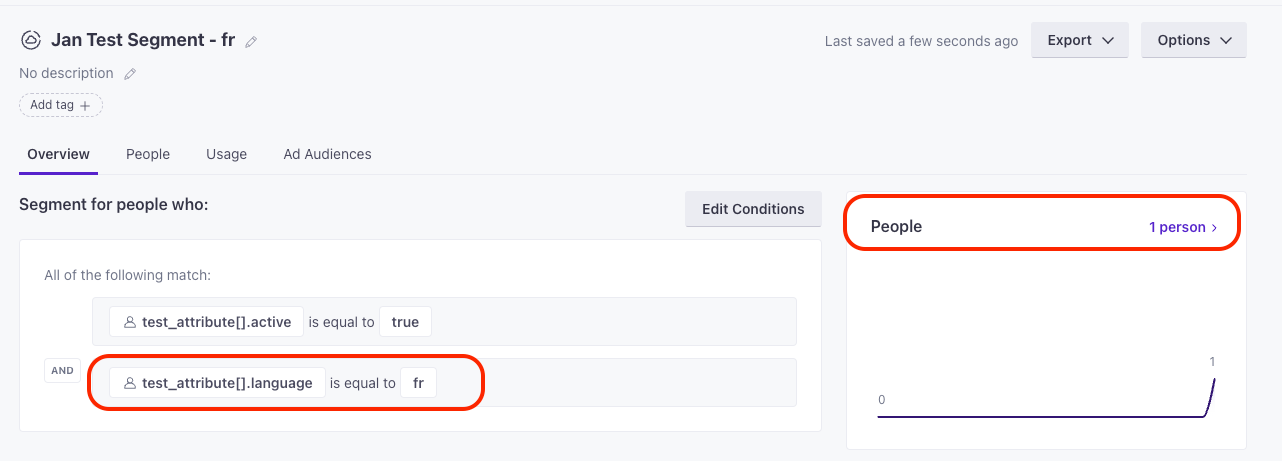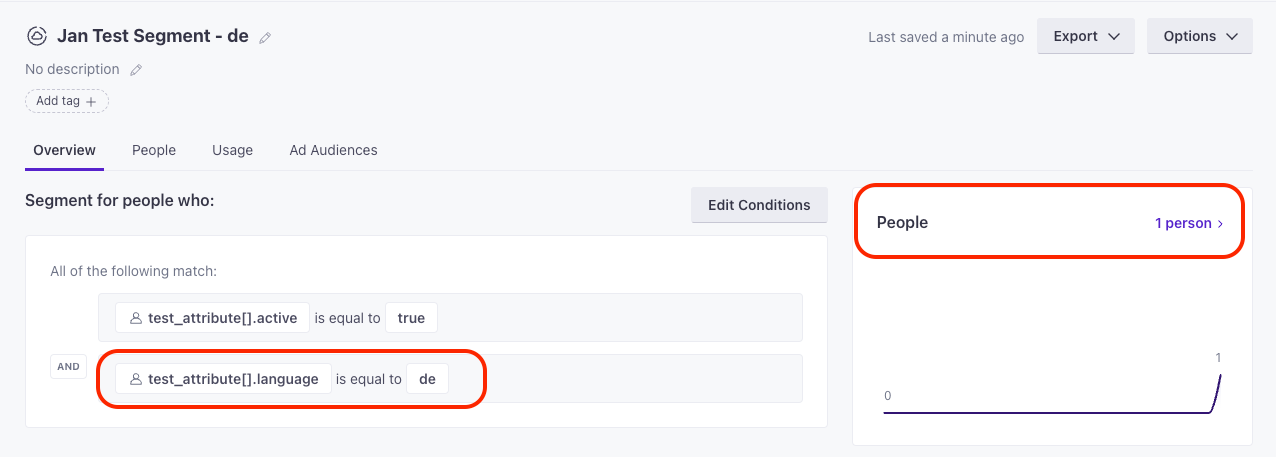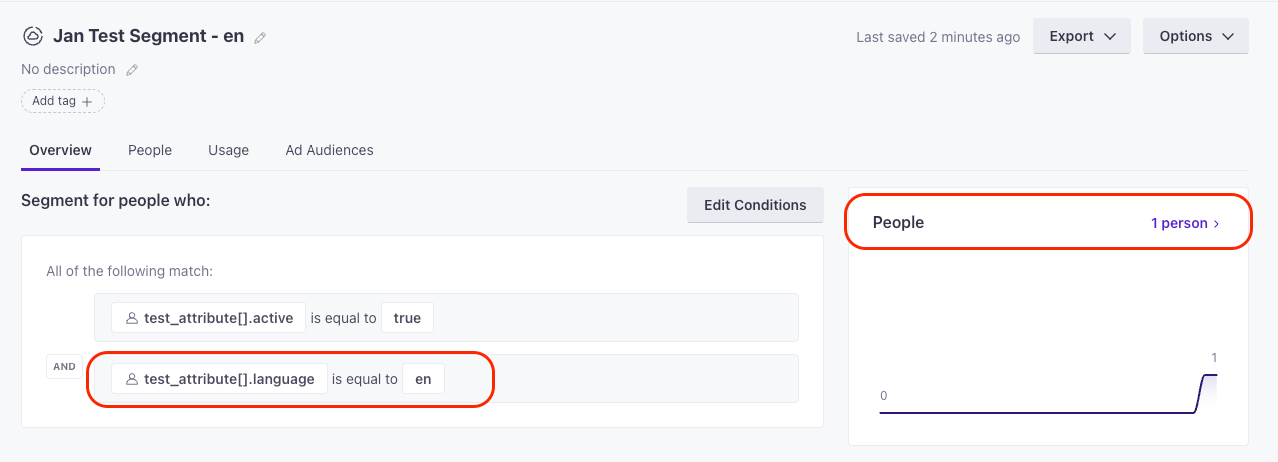I am trying to create a segment using an attribute which is a complex array of objects, which also include nested objects.
For testing I have creating an attribute with the following data:
[
{
"id": 1,
"active": true,
"language": "de"
},
{
"id": 2,
"active": false,
"language": "fr"
},
{
"id": 3,
"active": false,
"language": "en"
}
]
I want to segment based on the “active language” which means the language key of the object where the active key is set to true. So in the example above, the active language would be de.
Based on the documentation here: https://www.customer.io/docs/json-in-segments/
It doesn’t seem like there is a way to segment based on 2 keys within the same object, meaning that when I create the following segments for my active languages, this test user appears in all segments.



Is there a way to set up the segments so that this test user would only appear in the de segment and not in the otheres.
Best answer by Ramy
View original